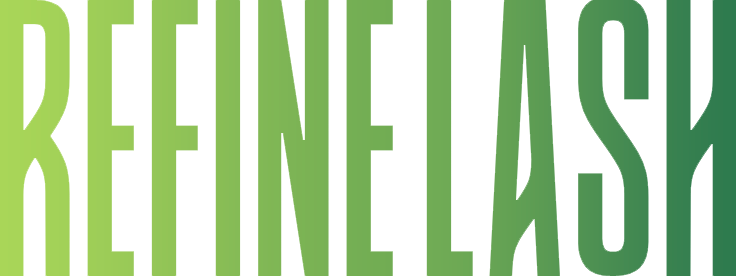Discover the environmental impact synthetic lashes and how lash salons can adopt sustainable practices. Industry insights included!
Dive deep into the environmental impact synthetic lashes! Learn sustainable practices & industry collaboration for a greener beauty future.
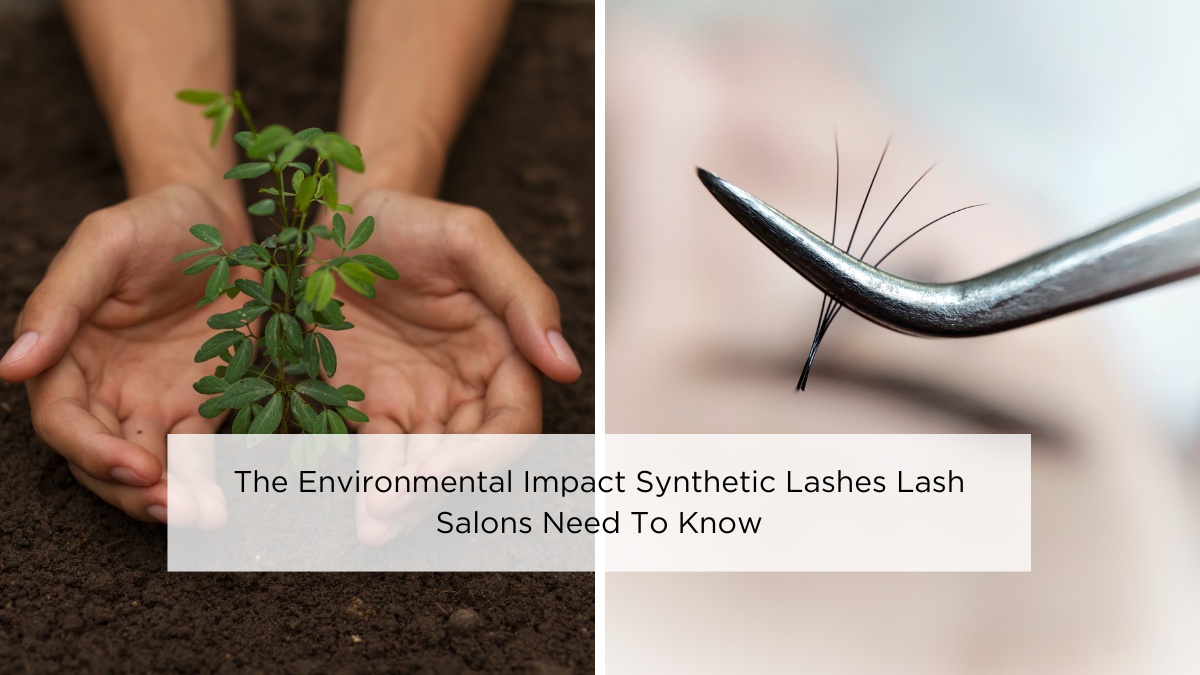
Understanding the Environmental Impact Synthetic Lashes
Delve into the eco effects of synthetic lashes! Explore materials, manufacturing impact, and waste management for a greener beauty choice.
Exploring the Environmental Concerns Of Materials Used in Synthetic Eyelashes
Most synthetic eyelash extensions are made of synthetic fibers such as Polybutylene Terephthalate (PBT) and Nylon, which have profound environmental implications. The production processes involved in these materials entail significant energy consumption and chemical usage, contributing to carbon emissions and pollution. Moreover, the disposal of synthetic lashes poses challenges due to their non-biodegradable nature, exacerbating landfill waste and microplastic pollution.
- High Energy Consumption: The production of PBT and Nylon requires substantial energy input, contributing to greenhouse gas emissions and climate change. This energy-intensive process adds to the environmental footprint of synthetic eyelashes, which is similar to mink fur lashes.
- Chemical Usage: The manufacturing of PBT eyelashes involves using various chemicals, including adhesives and synthetic materials such as PBT and Nylon. These chemicals emit volatile organic compounds (VOCs) during production, contributing to air pollution and posing health risks to workers and surrounding communities.
- Non-biodegradable Disposal: Lashes are made from synthetic fibers that are non-biodegradable, and pose challenges in disposal. Once discarded, they can persist in landfills for years, contributing to the accumulation of waste and pollution. Innovative disposal methods are needed to address this issue. Other lashes, like mink lashes, are biodegradable but are made from mink, the animals who are killed for their fur.
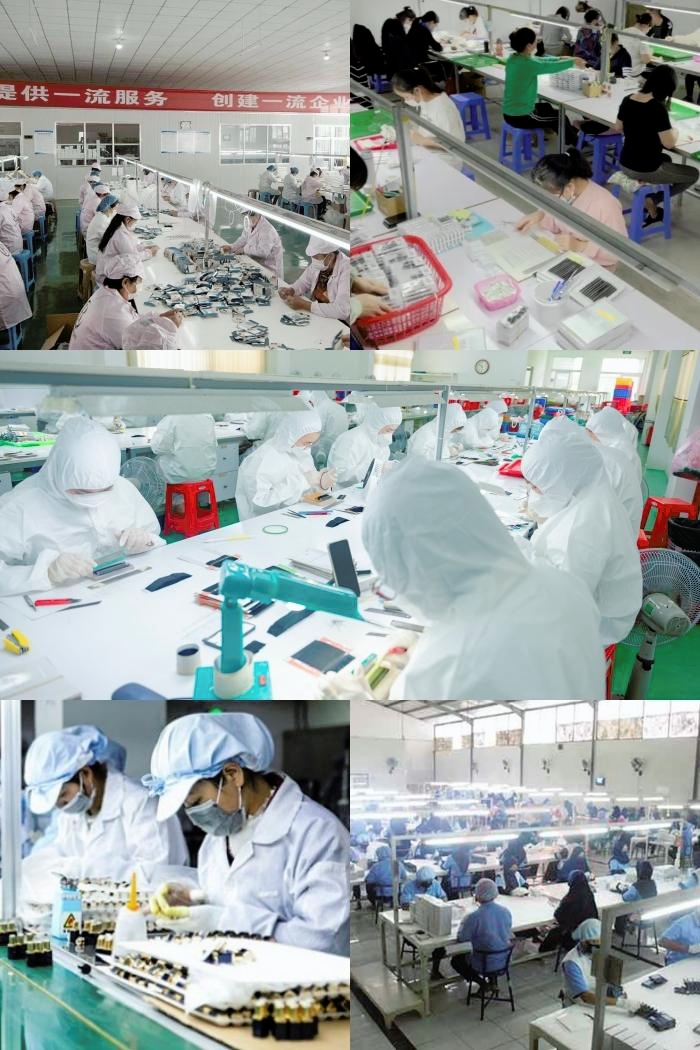
Understanding the environmental impact of materials used in synthetic eyelashes is vital for adopting sustainable lash extensions practices in the beauty industry. By exploring alternatives and promoting responsible production and disposal methods, we can work towards mitigating the environmental footprint of synthetic lash extensions.
Analyzing How the Manufacturing Processes of Synthetic Eyelashes Impact The Environment
The manufacturing processes of synthetic eyelashes significantly contribute to environmental degradation. Chemical use in lash production, including adhesives and synthetic material synthesis, produces harmful emissions and pollution. Moreover, the high energy consumption in manufacturing exacerbates carbon emissions, further accelerating climate change.
- Chemical Usage: The manufacturing of synthetic eyelashes involves using various chemicals, including adhesives and synthetic materials such as PBT and Nylon. These chemicals emit volatile organic compounds (VOCs) during production, contributing to air pollution and posing health risks to workers and surrounding communities.
- Energy Consumption: The energy-intensive nature of synthetic lash production, including heating, molding, and drying processes, leads to significant energy consumption. This reliance on fossil fuels contributes to greenhouse gas emissions, exacerbating climate change and environmental degradation.
- Carbon Footprint: Synthetic eyelash production has a considerable carbon footprint on the soil and water, mainly due to energy consumption and transportation logistics. The extraction and processing of raw materials, manufacturing processes, and distribution contribute to the release of greenhouse gases, further exacerbating climate change.
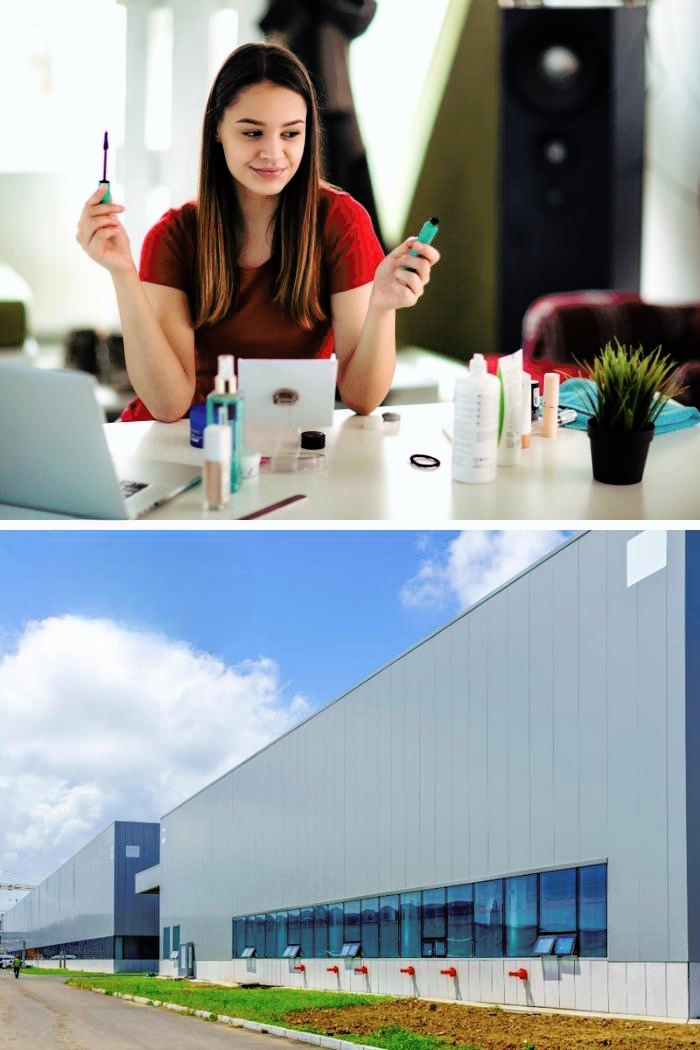
Understanding the environmental impact of manufacturing processes associated with synthetic eyelashes is crucial for implementing sustainable practices in the beauty industry. By reducing chemical use, optimizing energy consumption, and adopting cleaner production methods, we can minimize the environmental footprint of synthetic lash products.
Addressing Waste Management and Pollution Concerns In Synthetic Lash Production
Synthetic eyelashes pose significant challenges for waste management and contribute to environmental pollution. Improper disposal of synthetic lashes results in landfill waste accumulation, exacerbating environmental degradation. Additionally, synthetic eyelashes shed microplastics during use, leading to harmful effects on marine life and ecosystems.
- Landfill Waste: Synthetic eyelashes, being non-biodegradable, accumulate in landfills, contributing to the growing waste problem. Disposing of synthetic lash extensions adds to the already overflowing landfill sites, posing challenges for waste management and environmental sustainability.
- Ocean Plastic Pollution: Disposed synthetic eyelashes can also end up in oceans, contributing to plastic pollution. Microplastics shed from synthetic lashes during use enter waterways and harm marine life. This environmental impact synthetic lashes pose serious threats to marine ecosystems, including ingestion by marine animals and disrupting the food chains.
- Microplastics Pollution: Synthetic eyelashes shed microplastics during use, which accumulate in the environment and pose risks to wildlife and ecosystems. These microplastics can absorb toxic chemicals and be ingested by marine organisms, leading to bioaccumulation and potential harm to human health through the food chain.
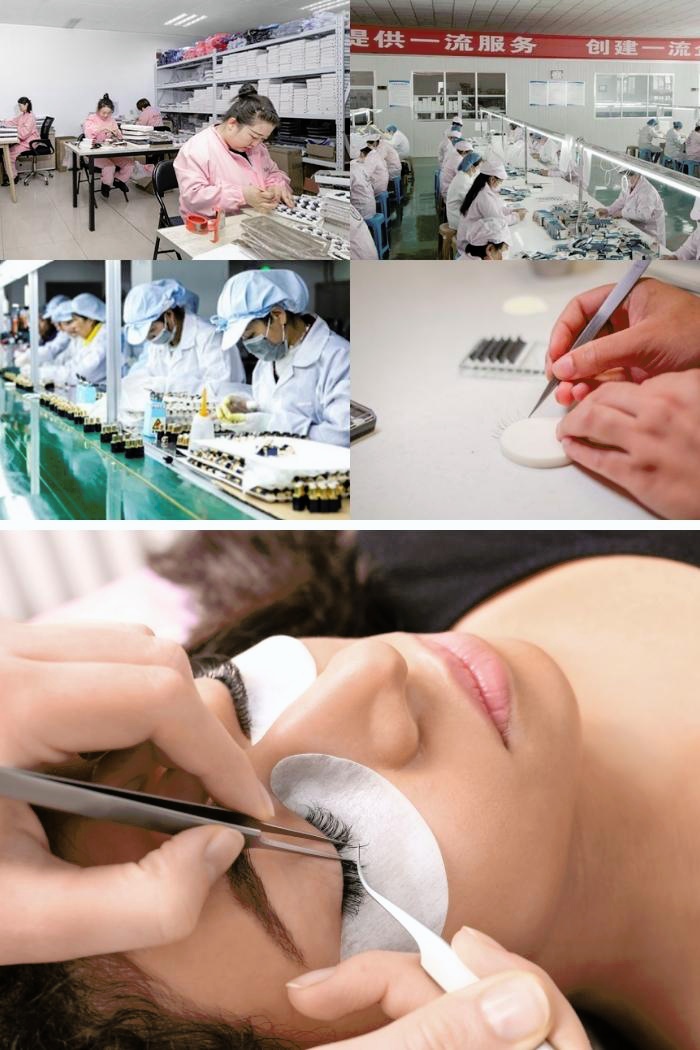
Addressing waste management and pollution concerns associated with synthetic lash production is crucial for mitigating environmental impact. Implementing proper disposal methods, promoting recycling initiatives, and raising awareness about microplastic pollution are essential steps towards a more sustainable beauty industry.
Implementing Practices in Lash Salons For Synthetic Lashes For Sustainability
Explore eco-friendly practices for synthetic lash salons! Learn about sustainable alternatives, recycling programs, and educating clients.
Transitioning to Eco-Friendly Lash Extensions Synthetic Alternatives
Synthetic eyelashes are evolving towards more sustainable lash alternatives to mitigate their environmental impact. Embracing sustainable manufacturing practices involves reducing energy consumption and minimizing chemical usage. Ethical sourcing of materials ensures that synthetic lashes are made from responsibly sourced ingredients, promoting environmental and social responsibility.
- Sustainable Manufacturing Practices: Adopting sustainable manufacturing practices involves reducing energy consumption, minimizing waste generation, and optimizing resource use. This includes investing in energy-efficient production processes, such as using renewable energy sources and implementing recycling initiatives to minimize environmental impact synthetic lashes.
- Biodegradable Materials and Vegan Options: Transitioning to biodegradable materials for synthetic eyelashes reduces their environmental footprint and promotes circularity in the beauty industry. Environmentally friendly lashes made from synthetic, vegan options, free from animal-derived ingredients, offer a cruelty-free alternative that aligns with ethical and environmental values.
- Sustainable Lash Adhesives and Packaging In Lash Salons: Utilizing sustainable lash adhesives, free from harmful chemicals and toxins, reduces environmental pollution and minimizes health risks for salon professionals and clients. Eco-friendly packaging options, such as recyclable or compostable materials, further contribute to reducing waste and promoting sustainability.

Transitioning to eco-friendly synthetic lash extension alternatives is essential for reducing the environmental impact of the beauty industry. By embracing sustainable manufacturing practices, exploring biodegradable and vegan options, and prioritizing sustainable adhesives and packaging, salons can lead the way toward a more sustainable future for synthetic eyelashes.
Adopting Recycling Programs For Synthetic Eyelash Extensions
Synthetic eyelash salons can reduce their environmental impact by implementing recycling programs and adopting biodegradable disposal methods. Lash recycling programs involve collecting used synthetic eyelashes and sending them to specialized facilities for recycling. Biodegradable disposal methods, such as composting, offer an eco-friendly alternative to traditional landfill disposal.
- Lash Recycling Programs: These programs involve collecting synthetic eyelashes used in your clients’ beauty routine and ensuring they are properly disposed of. Specialized facilities then process the collected lashes, recycling them into new products or materials, reducing waste and environmental pollution.
- Biodegradable Disposal Methods: Implementing biodegradable disposal methods, such as composting, enables synthetic eyelashes to break down naturally over time. Composting organic materials, including biodegradable lashes, helps reduce landfill waste and promotes soil health, contributing to environmental sustainability and ethical practices.
- Strategies to Minimize Microplastic Release: Salons can encourage clients to use reusable lash options instead of disposable ones to minimize microplastic release from synthetic eyelashes. Additionally, educating clients on proper lash care techniques, such as gentle removal and cleaning, can help extend the lifespan of synthetic lashes and reduce microplastic shedding during use.
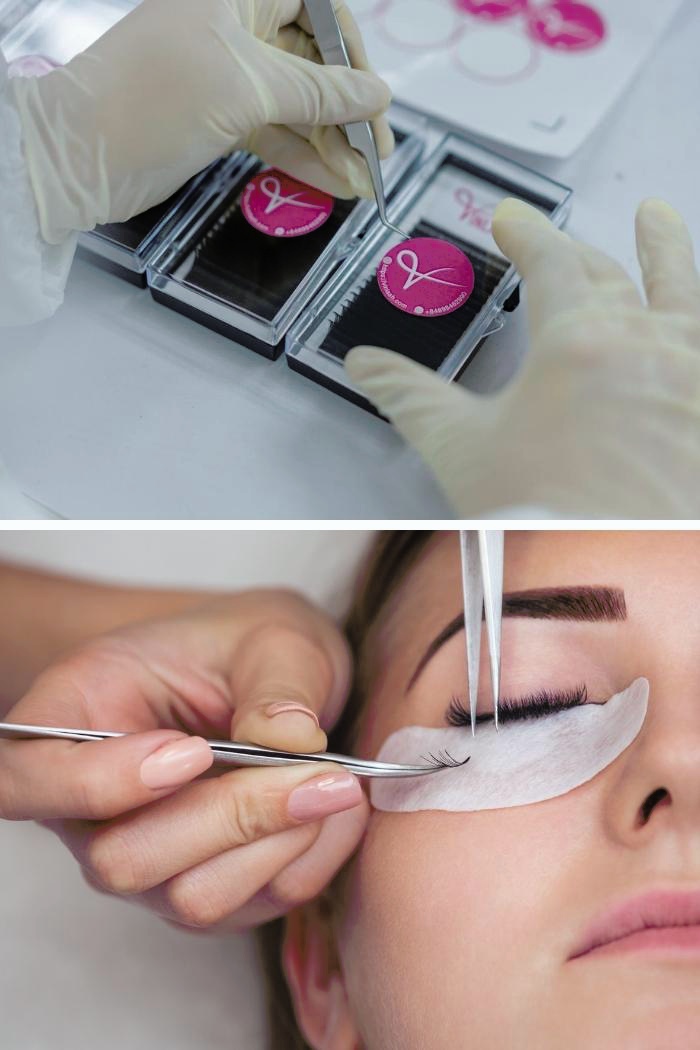
Adopting recycling programs and biodegradable disposal methods for synthetic eyelash extensions is crucial for reducing their environmental impact synthetic lashes. By implementing these strategies, salons can contribute to environmental sustainability and promote responsible waste management practices in the beauty industry.
Educating Clients on Sustainable Beauty Practices Associated With Synthetic Lashes
Synthetic eyelash salons are crucial in promoting eco-friendly consumer behavior and raising awareness about microplastic pollution. Providing information on sustainable beauty practices empowers clients to make environmentally conscious choices. Alternatives like reusable synthetic lash extensions and natural lash tinting offer sustainable options that reduce environmental impact.
- Promoting Eco-Friendly Consumer Behavior: Educating clients about the environmental impact synthetic lashes raises awareness and encourages responsible consumption. Offering alternatives such as reusable synthetic lash extensions is more sustainable for the environment. These eyelash extensions eco-friendly help reduce waste and promote sustainability in the beauty industry.
- Raising Awareness about Microplastic Pollution: Clients must understand the connection between synthetic eyelashes and microplastic pollution. By educating them about microplastic shedding from synthetic lashes and its devastating environmental effects, salons can encourage responsible disposal and usage habits to mitigate environmental harm.
- Encouraging Responsible Disposal and Usage Habits: Salons can be pivotal in educating clients and lash lovers about responsible disposal and usage habits. Providing a lot of information regarding proper lash removal techniques and encouraging clients to dispose of synthetic lashes responsibly can minimize impact on the environment and contribute to a more sustainable beauty industry.

Educating clients on sustainable beauty practices associated with synthetic lashes is essential for promoting environmental sustainability in the beauty industry. By raising awareness about the environmental impact of synthetic lash extensions and offering sustainable alternatives, salons can empower clients to make eco-friendly choices and contribute to a healthier planet.
Collaborating for Sustainable Industry Change In Synthetic Eyelash Extensions
The synthetic eyelash industry recognizes the need for collective action to address environmental concerns. Advocating for regulation and standards is crucial in ensuring the adoption of sustainable practices. Sharing best practices and establishing industry guidelines are also essential to promoting sustainability in the synthetic eyelash extension sector.
- Advocating for Regulation and Standards: Industry stakeholders actively support initiatives to regulate microplastics in synthetic lash extensions and promote sustainable beauty practices. By advocating for regulation and standards, the beauty and cosmetic industry can ensure the adoption of environmentally responsible practices and reduce the environmental impact synthetic lashes.
- Sharing Best Practices and Success Stories: Collaborating with industry peers to exchange ideas and promote sustainability fosters a culture of innovation and continuous improvement. Sharing success stories of salons that have successfully implemented eco-friendly practices inspires others to follow suit and contributes to collective efforts toward sustainability.
- Establishing Industry Guidelines: Collaborating with policymakers and regulatory bodies is crucial to establishing standards for eco-friendly synthetic lash extension products. By establishing industry guidelines, stakeholders can ensure consistency in eco-friendly practices across the synthetic eyelash extension industry.

The collaboration among industry stakeholders, along with advocacy efforts, sharing of best practices, and establishment of industry guidelines, will pave the way for a more sustainable future in the synthetic eyelash extension sector.
FAQs On Environmental Impact Synthetic Lashes
- Can synthetic lash extensions be recycled
Synthetic lash extensions are typically not recyclable due to their composition of materials like PBT and nylon. However, some salons may offer lash recycling programs, or alternative disposal methods, reducing environmental impact synthetic lashes. It’s essential to inquire with your salon about their sustainability practices regarding synthetic lash disposal.
- Are there regulations regarding the use of synthetic materials in lash extensions
Currently, there are no specific regulations governing the use of synthetic materials in lash extensions. However, some initiatives aim to regulate microplastics in beauty products, including lash extensions, to promote environmental sustainability. It’s essential to stay updated on any emerging regulations in the beauty industry.
- How can I dispose of synthetic lash extensions in an eco-friendly manner
To dispose of synthetic lash extensions eco-friendly, consider participating in lash recycling programs some salons offer. Additionally, inquire about biodegradable disposal methods, which can minimize environmental impact. It’s essential to choose responsible disposal options to reduce waste and promote sustainability.
- Are there any health risks associated with synthetic lash extensions
While rare, potential health risks with synthetic lash extensions include allergic reactions to adhesives and irritation from improper application or removal. It’s crucial to prioritize proper hygiene and seek professional application to minimize risks.
- What are some sustainable alternatives to synthetic lash extensions
Sustainable alternatives to synthetic lash extensions include lash extensions made from synthetic fibers with biodegradable characteristics like silk or faux mink lashes, as well as vegan options. Additionally, reusable lash extensions offer a more eco-friendly choice, reducing waste and promoting sustainability.
Conclusion
Understanding the environmental impact synthetic lashes is vital for lash salons. By adopting sustainable practices, including recycling programs and eco-friendly alternatives, salons can mitigate the negative effects of synthetic lash production, promoting a greener beauty industry.
